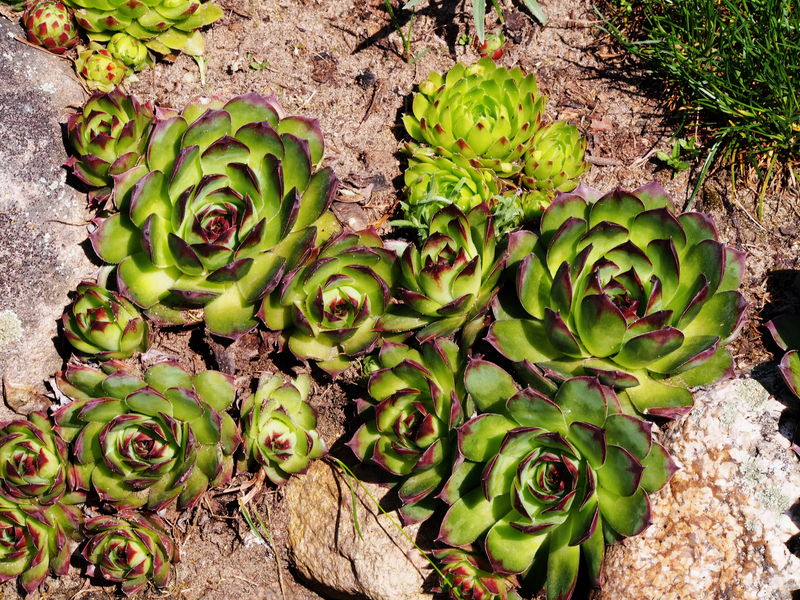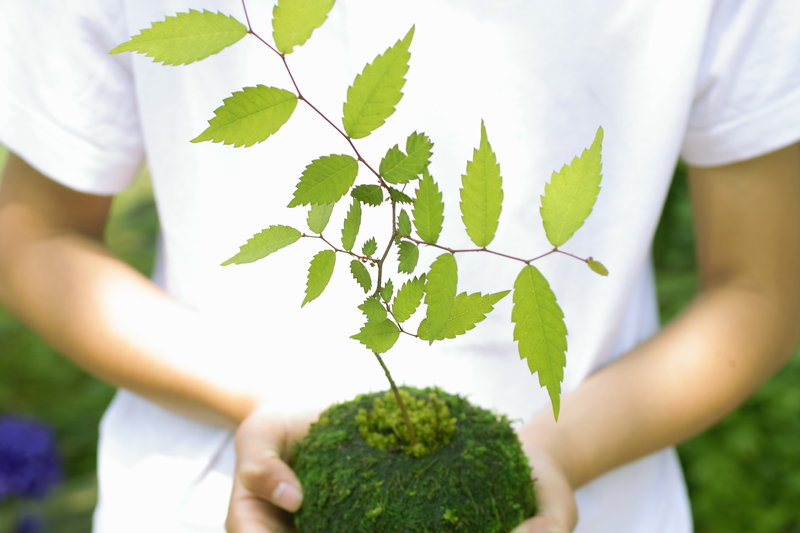Container Gardening: A Delightful Green Adventure
Posted on 12/09/2025
Container Gardening: A Delightful Green Adventure
Container gardening is more than just a gardening trend--it's a wonderful way to bring a touch of nature into any space, big or small. Whether you're a city dweller with a tiny balcony or blessed with a sprawling backyard, container gardening offers flexibility, creativity, and endless satisfaction. In this guide, you'll find everything you need to embark on your own delightful green adventure, from selecting containers to harvesting your first crop!
What Is Container Gardening?
At its core, container gardening simply means growing plants in pots, tubs, or other containers instead of directly in the ground. It's an ancient practice--one that's seen a blossoming rise in popularity thanks to urbanization and the growing interest in sustainable lifestyles. Whether you call it pot gardening, potted planting, or urban container gardening, this method allows you to cultivate flowers, herbs, vegetables, and even small trees almost anywhere.

Why Choose Container Gardening?
- Space Efficiency: Grow plants without the need for garden beds or large plots--perfect for balconies, patios, and windowsills.
- Mobility: Containers can be rearranged easily for sun exposure or aesthetic appeal.
- Soil Control: Customize soil mixes to suit each plant's needs, reducing pests and diseases.
- Accessibility: Gardening in containers is great for people of all ages and abilities, reducing bending and digging.
- Year-Round Gardening: Move containers indoors during cold months to extend the growing season.
Container gardening is a remarkable way to tune into nature, reduce stress, and boost your home's visual appeal--while reaping the delicious, fresh results of your own labor.
Choosing the Right Containers
The vessel you choose influences both the beauty and success of your potted garden. Here are top tips for picking containers:
Material Matters
- Terracotta: Classic, attractive, but can dry quickly. Ideal for succulents or Mediterranean herbs.
- Plastic: Lightweight, holds moisture well, cost-effective.
- Glazed Ceramic: Adds color and durability while retaining moisture.
- Wood: Rustic feel; cedar and redwood resist rot best.
- Metal: Stylish but can heat up quickly; better for shade or cooler climates.
- Fabric Grow Bags: Promote aeration and healthy root systems; excellent for vegetables.
Size and Drainage
- Ensure pots have adequate drainage holes to prevent waterlogging roots.
- Larger pots hold moisture longer and provide ample room for root growth--consider your plant's mature size.
- For windowsill gardens, shallow or small containers suit herbs and compact flowers.
Best Plants for Container Gardens
One of the joys of container gardening is the wide range of plants you can cultivate. Consider the following options:
Edible Container Plant Varieties
- Herbs: Basil, mint, chives, rosemary, parsley, and thyme flourish in pots.
- Vegetables: Cherry tomatoes, peppers, lettuce, spinach, radishes, and bush beans thrive in containers.
- Strawberries and dwarf berry bushes can be grown for a sweet treat.
- Microgreens are quick and simple for year-round harvests.
Flowerful Container Gardens
- Petunias, marigolds, pansies, geraniums, and begonias bloom beautifully in containers.
- Bulbs like tulips and daffodils create colorful spring displays.
- Cascading varieties such as lobelia and trailing verbena add charm to hanging baskets.
Ornamental Foliage Plants
- Ferns, hostas, coleus, and ornamental grasses bring texture and greenery to shaded spots.
- Succulents are excellent for sunny, dry containers and require minimal care.
Setting Up Your Container Garden
1. Choose the Right Soil Mix
Regular garden soil is often too dense for successful container gardening. Instead, opt for a quality potting mix designed for containers. For specific plant groups (like cacti, succulents, or orchids), select specialized blends.
- Look for mixes with peat moss, coir, perlite, or vermiculite to provide aeration and moisture retention.
- Consider organic amendments, such as compost or worm castings, to enrich your plants naturally.
2. Planting Your Containers
- Fill the container about 2/3 with soil, position your plants, then fill in around them. Firm the soil gently and water thoroughly.
- Leave 2-3cm (about 1 inch) gap at the rim for watering.
- Mix and match: For striking displays, combine thrillers (centerpiece plants), fillers (bushy companions), and spillers (trailing plants) in the same pot.
3. Placement: Finding the Ideal Spot
- Note your plants' sunlight needs--full sun, partial shade, or shade.
- Arrange containers so that tall plants don't shade out smaller companions.
Essential Care for Successful Container Gardening
Watering Wisely
- Pots dry out quicker than garden beds. Check moisture daily, especially in hot weather.
- Water deeply until it drains from the bottom, then let the top inch dry before watering again.
- Self-watering containers or a simple drip irrigation kit can save time and ensure consistency.
Feeding Your Plants
- Container-grown plants quickly use up available nutrients. Feed with a balanced liquid fertilizer every 2-4 weeks during the growing season.
- For edibles, consider organic options to keep your harvest chemical-free.
Managing Pests and Diseases
- Containers limit many soil-borne problems but still check for aphids, spider mites, or fungus gnats.
- Remove dead leaves, ensure airflow, and use natural pest solutions like neem oil or insecticidal soap when needed.
Creative Ideas and Design Tips for Container Gardens
Mix Colors and Textures
- Blend upright, bushy, and trailing plants for visual interest.
- Mix foliage colors--gray, chartreuse, burgundy--for a designer touch.
- Don't hesitate to mix edibles with ornamentals for a practical, stunning display.
Go Vertical
- Vertical towers, hanging baskets, and stacked planters maximize small space gardening.
- Trellises and supports let vines or climbing vegetables flourish in pots.
Repurpose and Upcycle
- Old buckets, baskets, crates, and even boots can be used as unique plant containers--just be sure to add drainage holes.
- Turn broken pots into artistic fairy gardens or succulent arrangements.
Common Challenges in Container Gardening & How to Overcome Them
- Over- or Under-Watering: Use your finger to check moisture and adjust frequency. Consider moisture meters for added accuracy.
- Poor Drainage: Ensure every container has holes. Raise pots on pot feet or small stones to improve airflow underneath.
- Root Crowding: Divide and repot perennials every couple of years, and choose spacious containers for long-term plants.
- Sunburned Plants: Move containers to shadier spots in the afternoon or shield with shade cloth during heat waves.
Container Gardening for Every Season
Container gardening isn't just for spring and summer!
- Spring: Plant bulbs and cool-weather veggies like lettuce and peas as soon as frost risks fade.
- Summer: Bright annuals and heat-loving vegetables thrive. Water generously.
- Autumn: Swap in mums, asters, and ornamental cabbages for fall color. Start overwintering perennials indoors.
- Winter: Evergreens, small conifers, and hardy succulents keep containers lively. In cold climates, insulate pots or bring them inside to protect roots.
Container Gardening for Kids and Beginners
Container gardening is a fantastic activity for children and novice gardeners! It's easy to start, quickly rewarding, and endlessly educational. Try these ideas:
- Sunflower or bean pots grow fast, delighting young gardeners.
- Grow a "pizza pot" of tomatoes, basil, and oregano in one container.
- Create a "mini butterfly garden" with nectar plants in a tub garden to attract pollinators.
Eco-Friendly Container Gardening
- Use organic soils and natural fertilizers.
- Collect rainwater to hydrate your potted plants more sustainably.
- Reuse and recycle old containers rather than buying new.
- Grow pollinator plants to support bees and beneficial insects.

Harvesting from Your Container Garden
Arguably, the most satisfying part of the container gardening adventure is the harvest! Whether it's a bowl of fresh salad greens, fragrant herbs, or lush blooms, you'll enjoy the freshest possible rewards.
- Pick edibles in the morning for best flavor.
- Deadhead flowers regularly to promote more blooms.
- Share your bounty--container gardens make great gifts for neighbors and friends!
Conclusion: Start Your Own Container Garden Today
Container gardening is a delightful green adventure that opens doors for gardeners of all skill levels and spaces. From kitchens to balconies and rooftops, this eco-friendly and versatile hobby empowers you to create living beauty, nurture fresh food, and reconnect with nature wherever you are.
Ready to begin your container gardening journey? Gather some pots, pick your favorite plants, and let your creativity flourish. Every flower, herb, and veggie you grow in a container is a small victory for you and the planet. Happy gardening!

